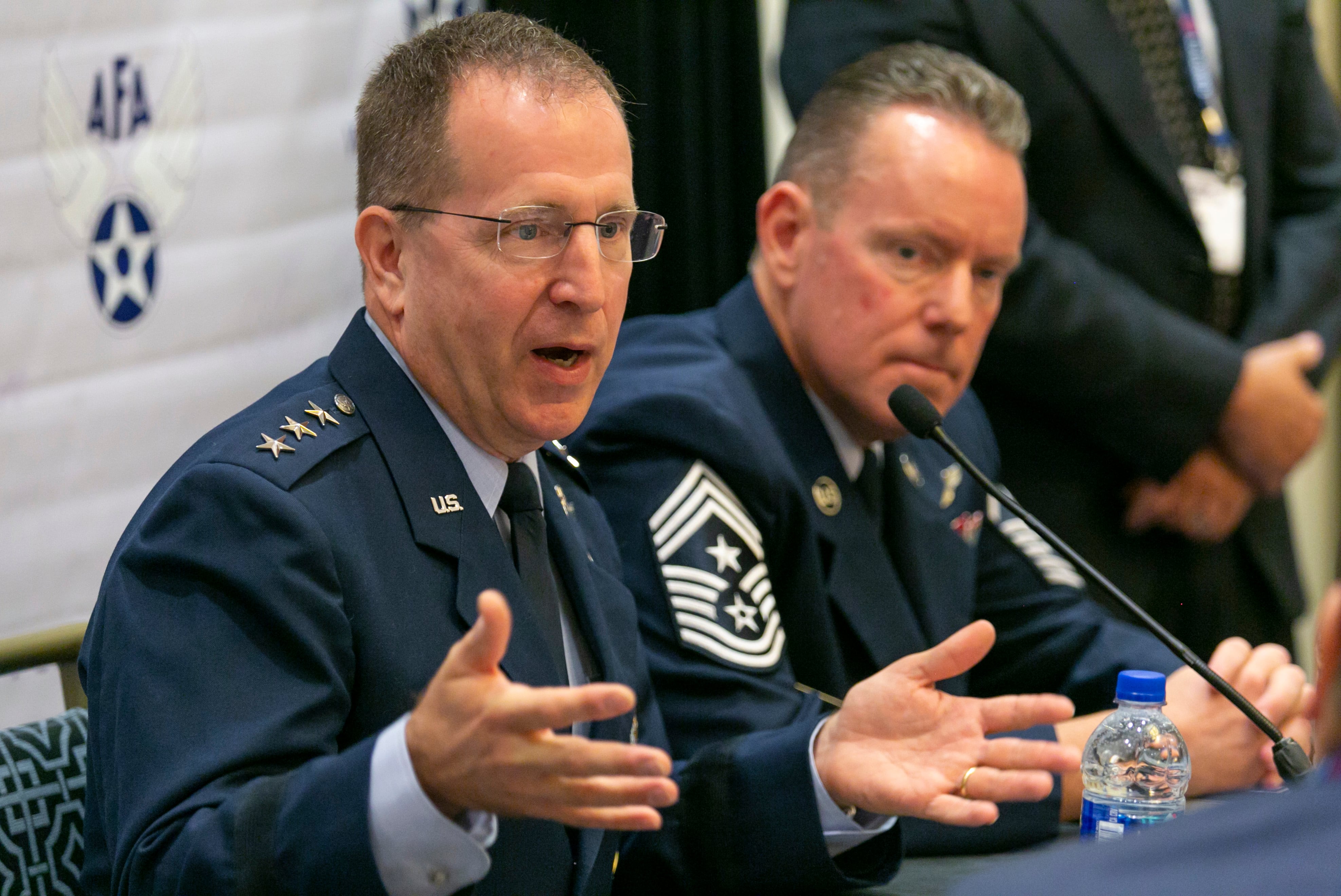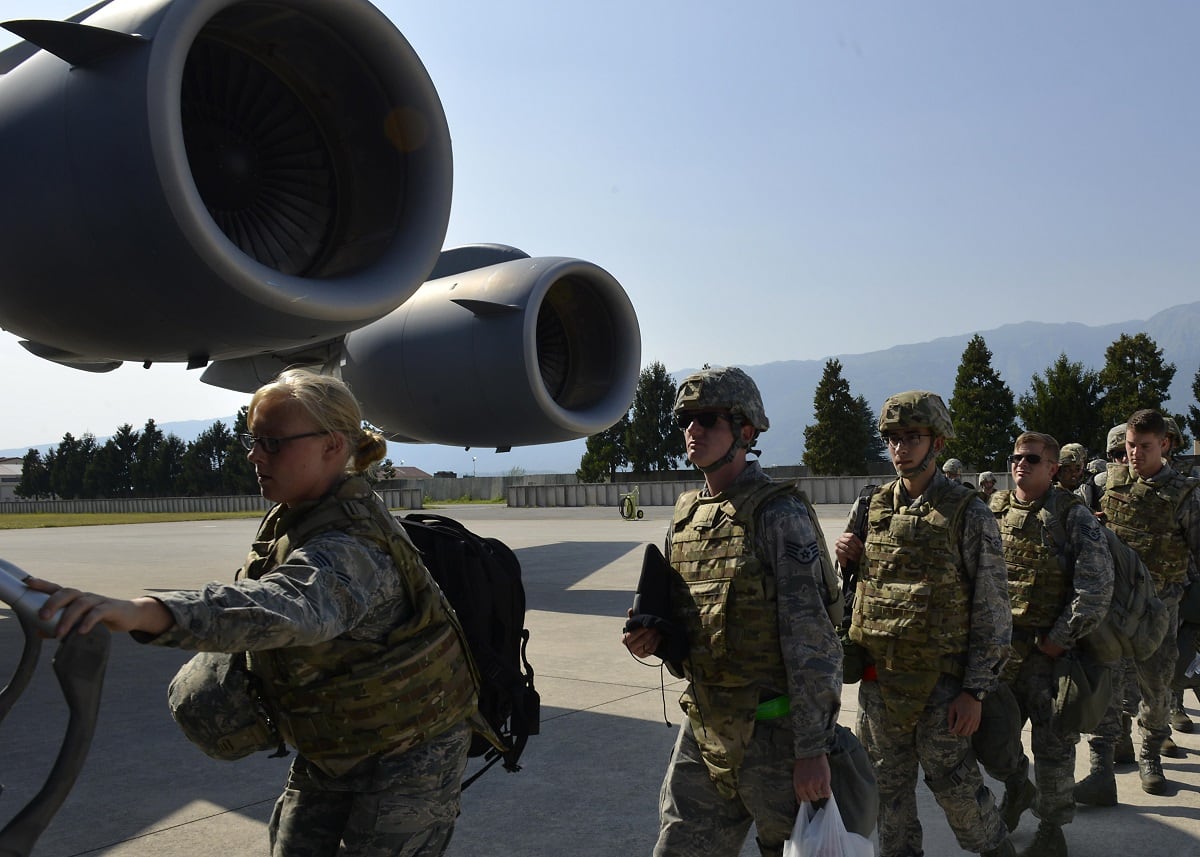The head of Air Force Special Operations Command said Monday he is cautiously optimistic about the manning levels and deployment expectations of some of its most highly trained and in-demand airmen.
During a roundtable with reporters at the Air Force Association’s Air Space Cyber conference in National Harbor, Maryland, Lt. Gen. Jim Slife acknowledged that some of AFSOC’s special warfare career fields — particularly combat controllers, pararescuemen and 1A9 special missions aviators, who often serve as gunners aboard AC-130 gunships — continue to face strains.
Those airmen are among those who have deployed time and time again to help shoulder the burden of fighting wars over the last 18 years.
Creating new combat controllers and pararescuemen has always presented a challenge, Slife said, because their training programs are some of the most difficult in the Air Force. But AFSOC is now seeing steady improvements in its ability to produce more of those airmen, and manning is “incrementally getting better.”
“Right now, we’re at a pretty sustainable level, and we’re growing the force to fill out the units and our deployment packages,” Slife said. “We’re healthy, and on our way to full manning in all those communities.”
AC-130 gunner manning is similarly improving, said Command Chief Master Sgt. Cory Olson.

AFSOC leaders continue to monitor the pace of deployments, and it’s taking a closer look at all its specialties to see where the “pressure points” are, Slife said.
AFSOC is now “in a pretty sustainable place,” he said, due to efforts by the Air Force and U.S. Special Operations Command to improve manning and reduce the pace of deployments for individual airmen.
Slife said that most AFSOC career fields are fairly close to the service’s goal of a 1:2 deploy-dwell ratio, or allowing airmen twice as much time at home after a deployment before they are once again sent overseas.
But combat controllers, PJs and special missions aviators are among those who particularly need AFSOC’s attention, he said.
“These are high-demand, high-tempo career fields,” Slife said. “We’re turning in the right direction, so I’m pretty optimistic.”
RELATED

AFSOC also is still working on integrating female airmen into the last male-only combat jobs, which were opened up to women at the end of 2015. However, no female airmen have successfully entered Air Force special warfare career fields such as tactical air control party.
An important part of that effort, Slife said, is trying to recruit more female candidates to try to become special warfare airmen. AFSOC has asked the newly created 330th Recruiting Squadron, which focuses solely on recruiting people into special warfare career fields, to pay particular attention to reaching out to communities of young women who could meet the demanding standards of these jobs.
Slife said he was excited to see 1st Lt. Chelsey Hibsch last month become the first female airman to graduate from Army Ranger School and earn her Ranger tab.
“Clearly, that’s the caliber of airman that we’re looking for, so I’m anxious to see our recruiting efforts bear some fruit,” Slife said. “It’s a matter of finding the right demographic and then painting a picture for them that, ‘Hey, there is a place for you in this force.’ Sometimes it’s hard when you can’t see somebody that looks like you in the community, it’s hard to see what your future looks like here.”
Stephen Losey is the air warfare reporter for Defense News. He previously covered leadership and personnel issues at Air Force Times, and the Pentagon, special operations and air warfare at Military.com. He has traveled to the Middle East to cover U.S. Air Force operations.





